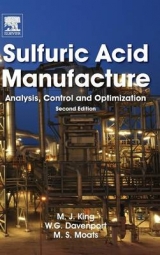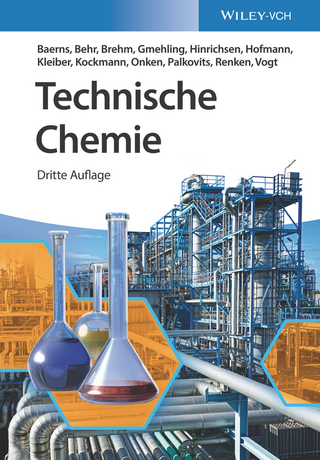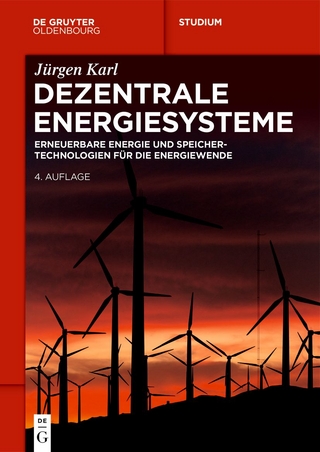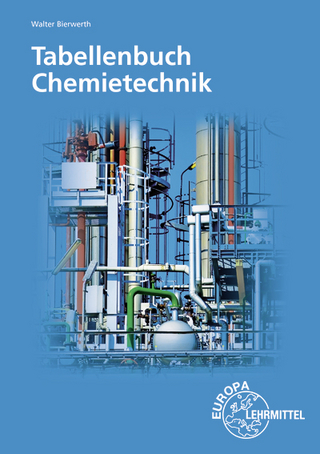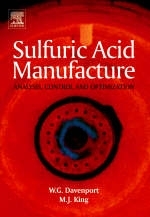
Sulfuric Acid Manufacture
Elsevier Science Ltd (Verlag)
978-0-08-044428-4 (ISBN)
- Titel erscheint in neuer Auflage
- Artikel merken
More sulfuric acid is produced every year than any other chemical. It has a wide range of uses including phosphate fertilizer production, explosives, glue, wood preservatives, and lead-acid batteries. It is also a particularily corrosive and dangerous acid, with extreme environmental and health hazards if not manufactured, used, and regulated properly.Sulfuric Acid Manufacture: Analysis, Control and Optimization keeps the important topics of safety and regulation at the forefront as it overviews and analyzes the process of sulfuric acid manufacture.The first nine chapters focus on the chemical plant processes involved in industrial acidmaking, with considerable data input from the authors' industrial colleagues. The last 15 chapters are dedicated to the mathematical analysis of acidmaking.Both Authors bring years of hands-on knowledge and experience to the work, making it an exceptional reference for anyone involved in sulfuric acid research and/or manufacture.
Professor William George Davenport is a graduate of the University of British Columbia and the Royal School of Mines, London. Prior to his academic career he worked with the Linde Division of Union Carbide in Tonawanda, New York. He spent a combined 43 years of teaching at McGill University and the University of Arizona. His Union Carbide days are recounted in the book Iron Blast Furnace, Analysis, Control and Optimization (English, Chinese, Japanese, Russian and Spanish editions). During the early years of his academic career he spent his summers working in many of Noranda Mines Company’s metallurgical plants, which led quickly to the book Extractive Metallurgy of Copper. This book has gone into five English language editions (with several printings) and Chinese, Farsi and Spanish language editions. He also had the good fortune to work in Phelps Dodge’s Playas flash smelter soon after coming to the University of Arizona. This experience contributed to the book Flash Smelting, with two English language editions and a Russian language edition and eventually to the book Sulfuric Acid Manufacture (2006), 2nd edition 2013. In 2013 co-authored Extractive Metallurgy of Nickel, Cobalt and Platinum Group Metals, which took him to all the continents except Antarctica. He and four co-authors are just finishing up the book Rare Earths: Science, Technology, Production and Use, which has taken him around the United States, Canada and France, visiting rare earth mines, smelters, manufacturing plants, laboratories and recycling facilities. Professor Davenport’s teaching has centered on ferrous and non-ferrous extractive metallurgy. He has visited (and continues to visit) about 10 metallurgical plants per year around the world to determine the relationships between theory and industrial practice. He has also taught plant design and economics throughout his career and has found this aspect of his work particularly rewarding. The delight of his life at the university has, however, always been academic advising of students on a one-on-one basis. Professor Davenport is a Fellow (and life member) of the Canadian Institute of Mining, Metallurgy and Petroleum and a twenty-five year member of the (U.S.) Society of Mining, Metallurgy and Exploration. He is recipient of the CIM Alcan Award, the TMS Extractive Metallurgy Lecture Award, the AusIMM Sir George Fisher Award, the AIME Mineral Industry Education Award, the American Mining Hall of Fame Medal of Merit and the SME Milton E. Wadsworth award. In September 2014 he will be honored by the Conference of Metallurgists’ Bill Davenport Honorary Symposium in Vancouver, British Columbia (his home town). Matthew J. King has over 25 years experience in copper smelter operations and sulfuric acid plant projects. The first eight years of his career were spent in various operations roles at a copper smelter. During that period, he completed his PhD focused on control and optimisation of metallurgical sulphuric acid plants. His career since then has been based in Australia, focusing mainly on sulfuric acid plant design and operations with some work in copper smelting, off-gas handling and steam systems design. Matthew is a co-author of five technical monographs, including the latest editions of Elsevier titles Sulfuric Acid Manufacture and Extractive Metallurgy of Copper.
Chapter 1: Overview
Chapter 2: Production and Consumption
Chapter 3: Sulfur Burning
Chapter 4: Metallurgical Offgas Cooling and Cleaning
Chapter 5: Regeneration of Spent Sulfuric Acid
Chapter 6: Dehydrating Air and Gases with Strong Sulfuric Acid
Chapter 7: Catalytic Oxidation of SO2 to SO3
Chapter 8: SO2 Oxidation Catalyst and Catalyst Beds
Chapter 9: Production of H2SO4(l) from SO3(g)
Chapter 10: Oxidation of SO2 to SO3 – Equilibrium Curves
Chapter 11: SO2 Oxidation Heatup Paths
Chapter 12: Maximum SO2 Oxidation: Heatup Path-Equilibrium Curve Intercepts
Chapter 13: Cooling 1st Catalyst Bed Exit Gas
Chapter 14: 2nd Catalyst Bed Heatup Path
Chapter 15: Maximum SO2 Oxidation in a 2nd Catalyst Bed
Chapter 16: 3rd Catalyst Bed SO2 Oxidation
Chapter 17: SO3 and CO2 in Feed Gas
Chapter 18: 3 Catalyst Bed Acid Plant
Chapter 19: After-H2SO4-Making SO2Oxidation
Chapter 20: Optimum Double Contact Acidmaking
Chapter 21: Enthalpies and Enthalpy Transfers
Chapter 22: Control of Gas Temperature by Bypassing
Chapter 23: H2SO4 Making
Chapter 24: Acid Temperature Control and Heat Recovery
Appendix A: Sulfuric Acid Properties
Appendix B: Derivation of Equilibrium Equation (10.12)
Appendix C: Free Energy Equations for Equilibrium Curve Calculations
Appendix D: Preparation of Fig. 10.2 Equilibrium Curve
Appendix E: Proof that Volume%= Mole% (for Ideal Gases)
Appendix F: Effect of CO2 and Ar on Equilibrium Equations (None)
Appendix G: Enthalpy Equations for Heatup Path Calculations
Appendix H: Matrix Solving Using Tables 11.2 and 14.2 as Examples
Appendix I: Enthalpy Equations in Heatup Path Matrix Cells
Appendix J: Heatup Path-Equilibrium Curve Intercept Calculations
Appendix K: 2nd Catalyst Bed Heatup Path Calculations
Appendix L: Equilibrium Equation for Multi-Catalyst Bed SO2 Oxidation
Appendix M: 2nd Catalyst Bed Intercept Calculations
Appendix N: 3
Appendix O: 3rd Catalyst Bed Intercept Worksheet
Appendix P: Effect of SO3 in Fig. 10.1 Feed Gas on Equilibrium Equations
Appendix Q: SO3-in-Feed-Gas Intercept Worksheet
Appendix R: CO2- and SO3-in-Feed-Gas Intercept Worksheet
Appendix S: 3-Catalyst-Bed ‘Converter’ Calculations#
Appendix T: Worksheet for Calculating After-Intermediate-H2SO4-Making Heatup Path Equilibrium Curve Intercepts
Appendix U: After-H2SO4-Making SO2 Oxidation with SO3 and CO2 in Input Gas
Appendix V: Moist Air in H2SO4 Making Calculations
Appendix W: Calculation of H2SO4 Making Tower Mass Flows
Answers to Numerical Problems
Author Index
Index
| Erscheint lt. Verlag | 4.11.2005 |
|---|---|
| Verlagsort | Oxford |
| Sprache | englisch |
| Gewicht | 1110 g |
| Themenwelt | Naturwissenschaften ► Chemie ► Technische Chemie |
| Technik ► Maschinenbau | |
| ISBN-10 | 0-08-044428-8 / 0080444288 |
| ISBN-13 | 978-0-08-044428-4 / 9780080444284 |
| Zustand | Neuware |
| Haben Sie eine Frage zum Produkt? |
aus dem Bereich
